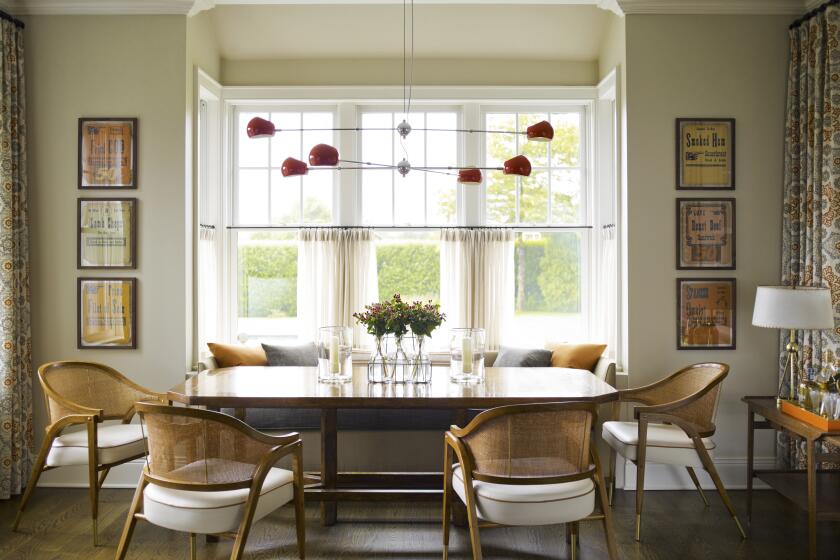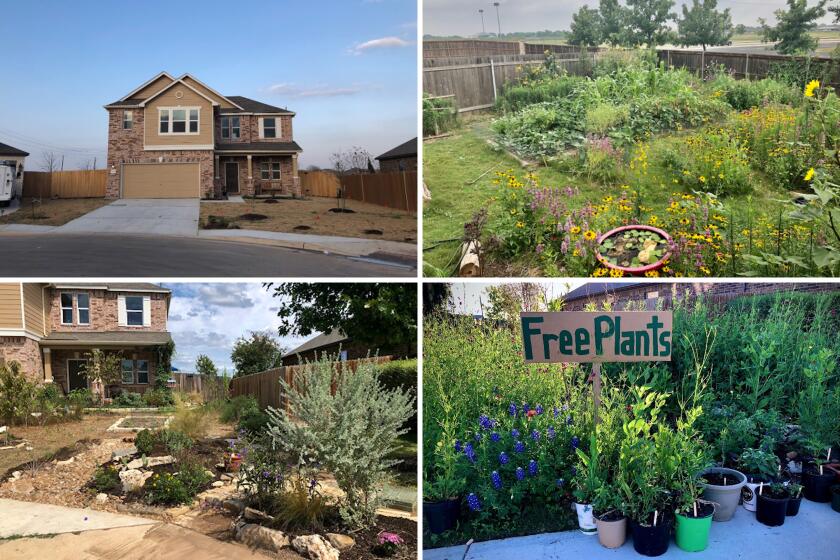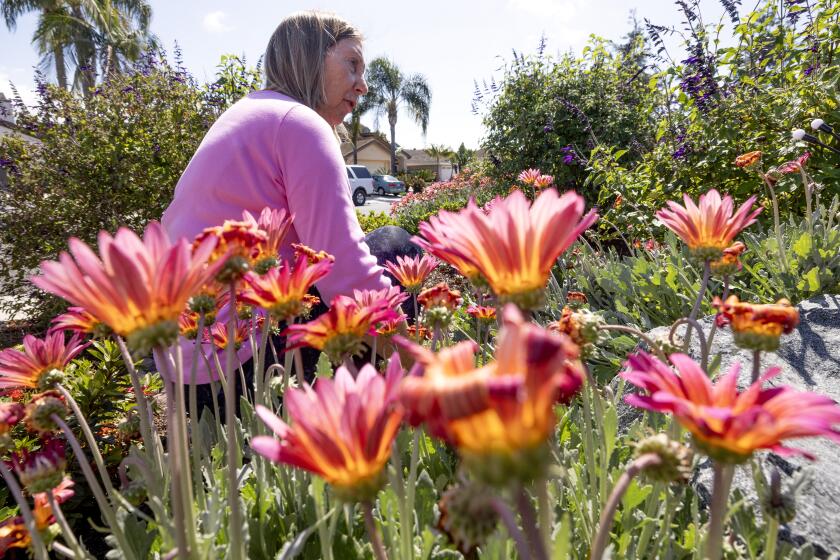Fresh ideas in flooring
No matter how large or small your home, how luxurious or humble, it has at least one type of flooring. Many have two or more. If you don’t absolutely love or hate what’s there, you probably don’t think much about it at all.
Builders usually install the most neutral materials that make sense for their communities. Live in an affordable suburb and you may have vinyl in your kitchen and baths. Live in a luxurious enclave and you likely have wood, natural stone or porcelain tile.
The good news is that there are tremendous advances across the board, and updating your floor can have a tremendous impact on your home’s style and value. It can also improve your well-being, comfort and convenience.
Where to start
You have more choices than ever in flooring for your home, and the choice of what to use should start with functionality. How much wear will it take? How will moisture impact it? How easy is it to maintain? How hard or soft is it underfoot? Trends change over time — remember carpeted master baths? — but it always comes down to what works best for your household.
As there are multiple options to meet different needs, resale is another factor to keep in mind. Where you live should factor into the flooring type you choose in order to get the best return on your flooring investment.
“We tend to see more natural products like hardwood and stone flooring in places like Rancho Santa Fe, La Jolla and downtown condos,” shares Cole’s Fine Flooring San Marcos sales manager Jeremy Fratt. “Other areas of the county, where there may be more rental properties, tend to lean more toward carpet, laminate or vinyl flooring.”
You can get a comparable look from wood or laminate. “Real wood adds more value to the home, and can actually be repaired easier than laminate in most cases. It may cost a little more, but over time, hardwood can present a higher value to most homeowners,” he notes. “Laminate can be a great choice for those working within a budget, or for those who are looking for a low-maintenance flooring solution.”
Another option for homeowners wanting a wood look is tile. Yes, tile! High-tech offerings are bringing realistic wood-look trends to spaces like full baths and outdoor settings where real wood would not work at all. “This gives designers and homeowners [more] new, beautiful flooring options than they had in the past,” says Neal Ross, vice president of merchandising for ProSource Wholesale Floorcoverings, a national chain with a San Diego branch.
Going green
Many homeowners are interested in environmentally friendly flooring, and they have more options to choose from, too. Their reasons might be health-related, sustainability or both. “Green choices in flooring are readily available and are classified as either made from a renewable resource, made from recycled material, recyclable after use or a combination of these,” Ross explains.
Bamboo fits into the renewal category, notes Cole’s manager Fratt. It also repels moisture, which hardwood does not do, but there are some cautions: “There have been some companies found to purchase flooring products with higher amounts of formaldehyde in the product in order to save money. Coles is not one of those companies,” he emphasizes. “All of our products have passed all regulations by the California Air Resources Board. It’s good for consumers to know that if products are sold too cheaply, there must be a reason.”
Hard floor trends
On a national level, “the current trends in wood lean more toward a worn look versus the smooth, glossy, traditional looks. This includes hand-scraped looks, boards that have been wire-brushed to provide more texture, and a reclaimed look that makes the floor appear it was pulled from an old barn,” ProSource’s Ross notes. “Additionally, customers want longer and wider planks. We are still seeing a trend towards gray coloring,” he adds.
In our local area, Fratt says, “there is a shift to wide-board European oaks. These oak floors tend to have more of a matte finish and can be used in both traditional and contemporary homes.” He is also spotting fatter boards in both wood and laminate, with a trend toward random-sized planks. Taupes and grays are dominating the color choices here and nationally.
In addition to wood and laminate (and, to a lesser extent, bamboo), tile trends show up strongly across the region. “Tile flooring changes very rapidly from year to year,” the Coles manager says. “The current trends are much larger-size tiles.” We are seeing high-polished looks trend upward the last year or so. Probably the biggest spike in tile trends locally has been the wood plank tile look. That has caught on like wildfire. You get the look of hardwood, with the durability and low maintenance of tile floors.” Plus, they’ll get wet without getting ruined. (Be cautious about slip resistance, though, when choosing tile for shower floors or outdoor rooms.)
Soft floor trends
There is still a place for carpet in the home, both Fratt and Ross note. “People generally want to have a softer surface in bedrooms or family rooms where they may spend more time on the floor,” says the Coles manager.
“Patterns are the big trend in carpet right now. We have seen a shift away from the basic plush texture and are seeing more carpets with a design element or pattern,” he adds.
“Geometrics are popular and are found with crisp definition or more organic versions. Gray tones have found their way through every flooring category, and carpet is no different,” ProSource’s Ross says of the national trend.
There have been tremendous advances in carpet’s stain and water resistance, both flooring executives say, that make it worth looking at again. If you’re still concerned, or want a more modern look, carpet tiles are another option to consider. Long a commercial mainstay, they have definite advantages for heavily used living or workout spaces. A damaged or stained tile easily can be replaced with a new one.
New vinyl plank meets the same need for homes wanting to avoid carpeted surfaces, though it can go into moist environments. “Vinyl is softer and warmer underfoot than most of its natural counterparts,” Ross says. “This makes it ideal for areas where a certain ‘look’ is desired (i.e. slate or hardwood) but the unforgiving hardness of the natural product is unwanted. Vinyl products wear better than most other flooring products, too, which lends them to be a perfect choice for higher traffic areas,” he adds. For those wanting a vinyl alternative, linoleum offers a soft, natural floor surface that works in kitchens and living spaces, too.
Last words
When choosing flooring for your home, ask yourself whether it’s a look you’ll love long after the trend fades, whether it’s going to work visually with the other surfaces in the visual space and whether it’s going to take more time out of your schedule to maintain than you’d like to give it. Once you’ve made the decision, be sure to have it properly prepared and installed to maximize its life span.
Get U-T Arts & Culture on Thursdays
A San Diego insider’s look at what talented artists are bringing to the stage, screen, galleries and more.
You may occasionally receive promotional content from the San Diego Union-Tribune.





